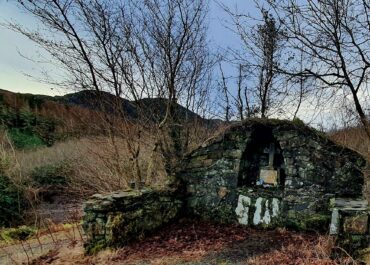Ritual site - holy well, An Ardaidh Bheag, Co. Donegal
In the townland of An Ardaidh Bheag near Gortahork in County Donegal, a modest stone trough marks what locals have long revered as St. Colmcille's Holy Well.
Ritual site - holy well, An Ardaidh Bheag, Co. Donegal
The rectangular basin, measuring 1.25 metres by 0.5 metres and three quarters of a metre deep, sits on sloping ground just above marshy terrain, with a stream flowing southward towards Binanea Strand nearby. Behind the well stands a rough cairn of stones, at one end of which someone has fashioned a crude stone altar, suggesting centuries of pilgrim devotion at this spot.
The site gained particular significance on 9th June each year, when pilgrims would perform stations here, following prescribed prayers and rituals associated with St. Colmcille, one of Ireland’s most celebrated saints. Writing in 1936, the folklorist Ó Muirgheasa documented a fascinating detail: amongst the stones at the well lies a half-perforated stone hammer, an object held in such reverence due to its association with the holy site that no visitor would dare remove it. This hammer likely predates the well’s Christian use, possibly originating in prehistoric times, yet has been absorbed into the site’s sacred character.
The well exemplifies how Ireland’s holy wells often occupy liminal spaces; positioned between dry ground and marshland, between the everyday world and the sacred realm. These sites frequently show evidence of continuous use from pre-Christian times through to the present day, with ancient stone tools and natural springs taking on new religious significance as Christianity spread through Ireland. The rough stone altar and careful maintenance of the well’s stone lining speak to generations of local people who have preserved this modest but meaningful piece of Donegal’s spiritual landscape.


